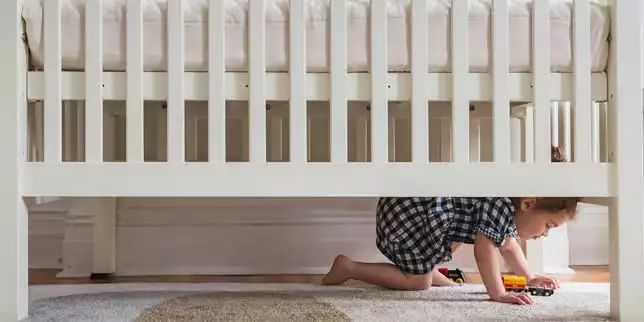Transitioning your child from a crib to a big bed is a rite of passage that many parents anticipate with mixed emotions. It represents a crucial developmental milestone, yet it can feel daunting. The allure of getting rid of the crib and advancing to a more ‘grown-up’ bed often tempts parents, but rushing this process can lead to unforeseen complications. Instead, a thoughtful approach is necessary to ensure both your child’s comfort and your peace of mind. Below, we explore key considerations for this important transition.
The Age Factor: Why Timing is Everything
One of the primary considerations when transitioning to a big bed is your child’s age. Conventional wisdom suggests that most children reach an appropriate readiness for this shift at around three years old. This guideline isn’t mere tradition; it is rooted in the understanding of child development. At this age, children generally possess greater emotional stability and cognitive skills needed to comprehend the concept of bedtime while respecting boundaries. If you move too quickly, your little one might struggle with the transition, which could lead to sleep disruptions that haunt both parent and child.
Some parents might feel societal pressure or witness peers making the transition earlier, but it’s essential to remember that every child is unique. Trust your instincts: if your child shows signs of emotional attachment to the crib and demonstrates overall comfort, it’s wise to hold off on the transition. Waiting for that natural inclination to move might save you from potential bedtime battles.
Assessing Sleep Patterns: A Necessary Precursor
Before making the leap to a big bed, it is crucial to evaluate your child’s existing sleep habits. If your toddler struggles with falling asleep, frequently wakes throughout the night, or rises earlier than desired, swapping a crib for a bed is likely to exacerbate these issues.
Addressing these sleep challenges first can create a more stable environment for your child. Making adjustments to their daily routine—perhaps a more consistent bedtime or calming pre-sleep rituals—can build a stronger foundation. Once your child demonstrates healthy sleep patterns, the transition may proceed with greater success, ensuring that the big bed is a step towards better sleep, rather than a hurdle.
Contentment in the Crib: A Key Indicator
Believe it or not, sometimes the best decision is to simply leave things as they are. If your toddler is happily sleeping in their crib and does not exhibit any signs of wanting to escape, the focus should be on maintaining that comfort. It can be tempting to push for the transition as children reach “the magic age” of three, but there’s no reward for rushing. Your child’s happiness and security should be the priority.
If they’re still within the safety limits of their crib and aren’t actively asking to switch beds, why change? Resistance to change, even minimal, signifies the importance of that familiar space. Eventually, when your child shows excitement or eagerness to upgrade their sleeping conditions, it will make the shift feel like an adventure rather than an obligation.
Understanding Your Child’s Personality: The Climber and the Boundary-Pusher
Every child comes with their own unique personality traits. If your toddler displays a flair for climbing, it’s vital to consider whether moving to a big bed will enhance or complicate this behavior. Children who love to test boundaries may not respect the unsupervised freedom of a big bed, leading to unintended nighttime escapades.
For those little climbers, exploring solutions before transitioning can make a significant difference. Strategies like sleep sacks or incentive systems for staying in bed can create a conducive environment. Instead of jumping to a big bed, focus on what underlies the climbing instinct and work towards nurturing better sleep behaviors over time.
Managing Expectations: The Sibling Factor
For parents awaiting the arrival of a new baby, the decision to transition a toddler out of the crib can become even more complicated. While the prospect of freeing up the crib for the newborn is appealing, it’s essential to assess whether this change is in your toddler’s best interest.
If your first child isn’t quite ready, maintaining two cribs might be the best solution, allowing for a smoother transition for everyone involved. After all, what you want to avoid is the chaos of disrupted sleep patterns for both your toddler and the newborn.
Instead of succumbing to the pressures of transitioning too soon, take the time to reflect on your child’s readiness and current habits. Each step you take can potentially lead to a smoother journey towards fostering your toddler’s independence, ensuring that the transition is a rewarding experience for both of you.

